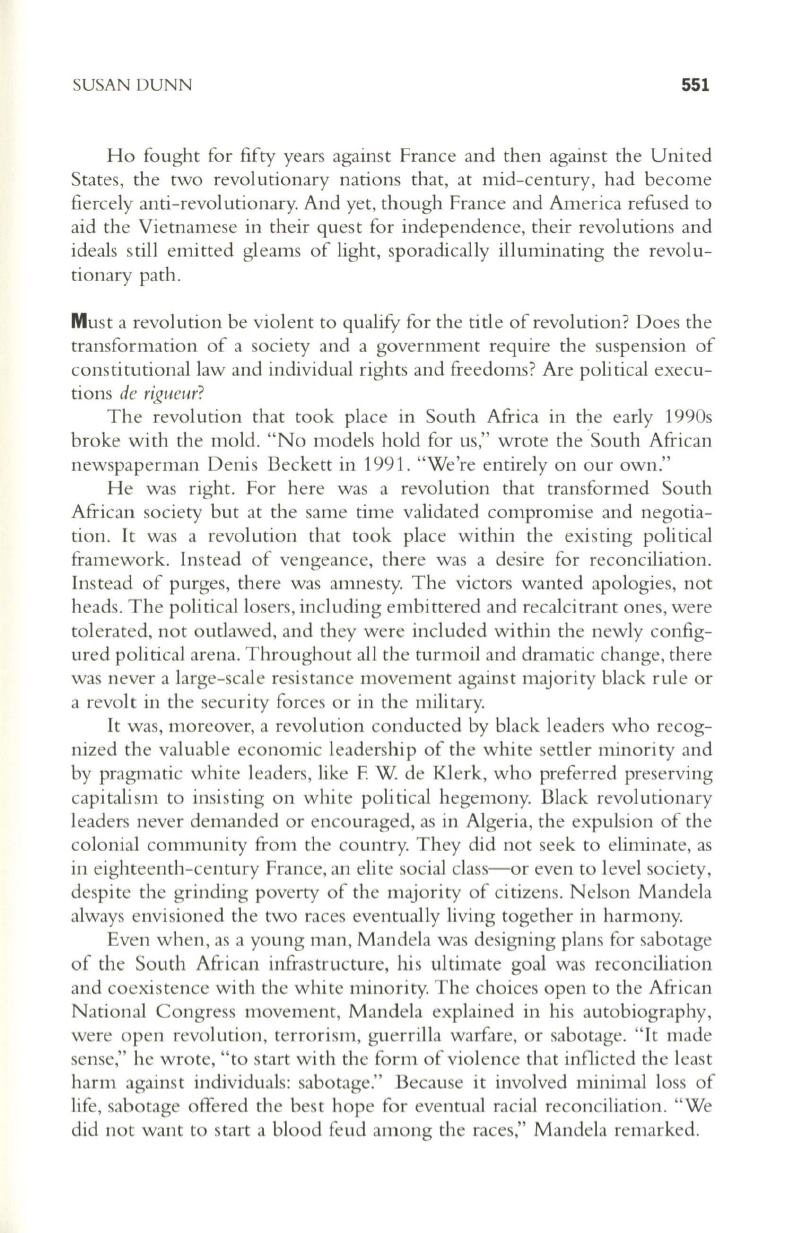
SUSAN DUNN
551
Ho fought for fifty years against France and then against the United
States, the two revolutionary nations that, at mid-century, had become
fiercely anti-revol utionary. And yet, though France and America refused to
aid the Vietnamese in their quest for independence, their revolutions and
ideals still emi tted gleams of light, sporadically illuminating the revol u–
tionary path.
Must a revolution be violent to qualifY for the title of revolution? Does the
transformation of a society and a government require the suspension of
constitutional law and individual rights and freedoms? Are political execu–
tions
de rigueur?
The revolution that took place in South Mrica in the early 1990s
broke with the mold. "No models hold for us," wrote the ·South African
newspaperman Denis Beckett in 1991. "We're entirely on our own."
He was right. For here was a revolution that transformed South
African society but at the same time validated compromise and negotia–
tion. It was a revolution that took place within the existing political
framework. Instead of vengeance, there was a desire for reconciliation.
Instead of purges, there was amnesty. The victors wanted apologies, not
heads. The political losers, including embittered and recalcitrant ones, were
tolerated, not outlawed, and they were included within the newly config–
ured political arena. Throughout all the turmoil and dramatic change, there
was never a large-scale resistance movement against majority black rule or
a revolt in the security forces or in the military.
It was, moreover, a revolution conducted by black leaders who recog–
nized the valuable economic leadership of the white settler minority and
by pragmatic white leaders, like F W de KJerk, who preferred preserving
capitalism to insisting on white political hegemony. Black revolutionary
leaders never demanded or encouraged, as in Algeria, the expulsion of the
colonial conununity from the country. They did not seek to eliminate, as
in eighteenth-century France, an eli te social class-or even to level society,
despite the grinding poverty of the majority of citizens. Nelson Mandela
always envisioned the two races eventually living together in harmony.
Even when, as a young man, Mandela was designing plans for sabotage
of the South African infrastructure, his ultimate goal was reconciliation
and coexistence with the white minority. The choices open to the African
National Congress movement, Mandela explained in his autobiography,
were open revolution, terrorism, guerrilla warfare, or sabotage.
"It
made
sense," he wrote, "to start wi th the form of violence that inflicted the leas t
harm against individuals: sabotage." Because it involved minimal loss of
life, sabotage offered the best hope for eventual racial reconciliation. "We
did not want to start a blood feud among the races," Mandela remarked.


